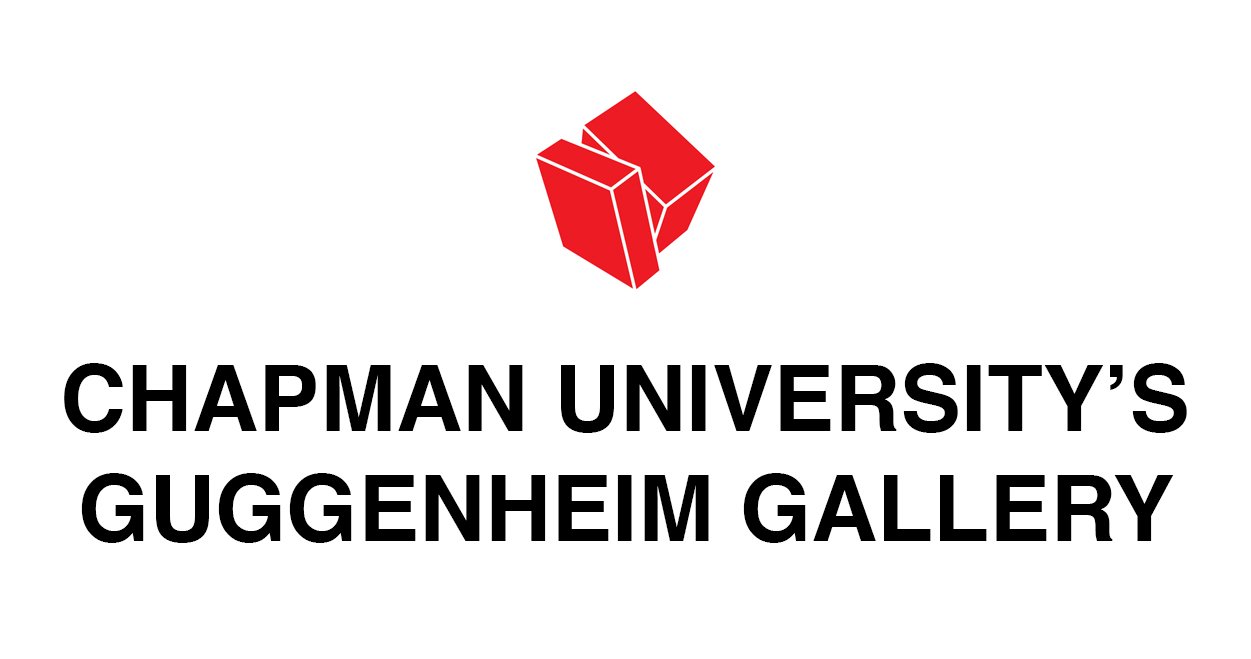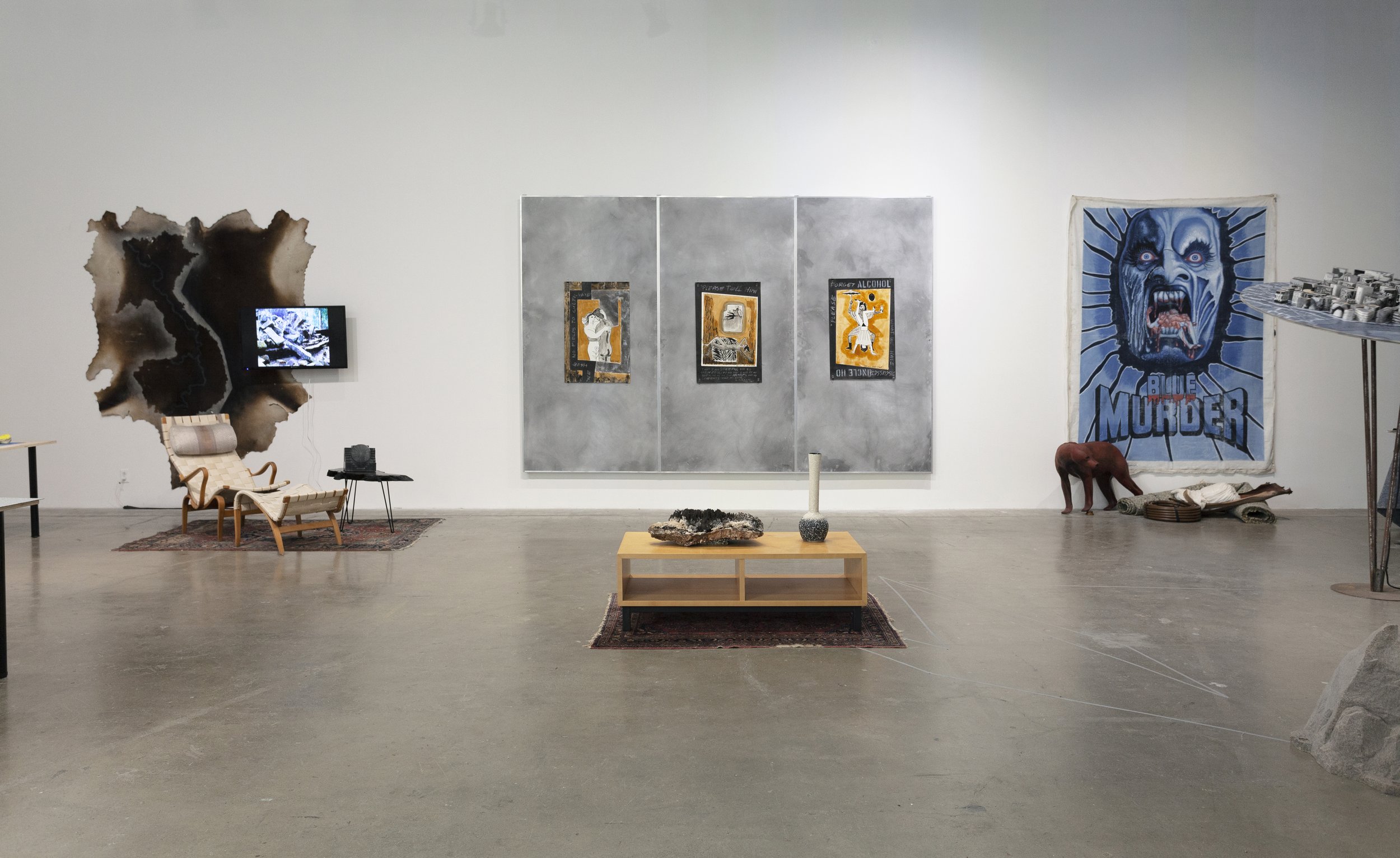
The exhibit is comprised of 29 numbered pieces divided into two groups, rigid and flexible. The artworks are components of previous installations, unexhibited and/or unfinished pieces, and material collected for unrealized pieces.

The table in the middle of the space holds a mineral specimen purchased at a gem and mineral show by Turner. The table and rug are from Turner’s house, and the vase is from his collection of mid-century ceramics.





This fiberglass rock was purchased at Lowes Home Improvement and is designed to conceal water pumps. The title of the piece refers to a chapter in James Joyce's Ulysses.




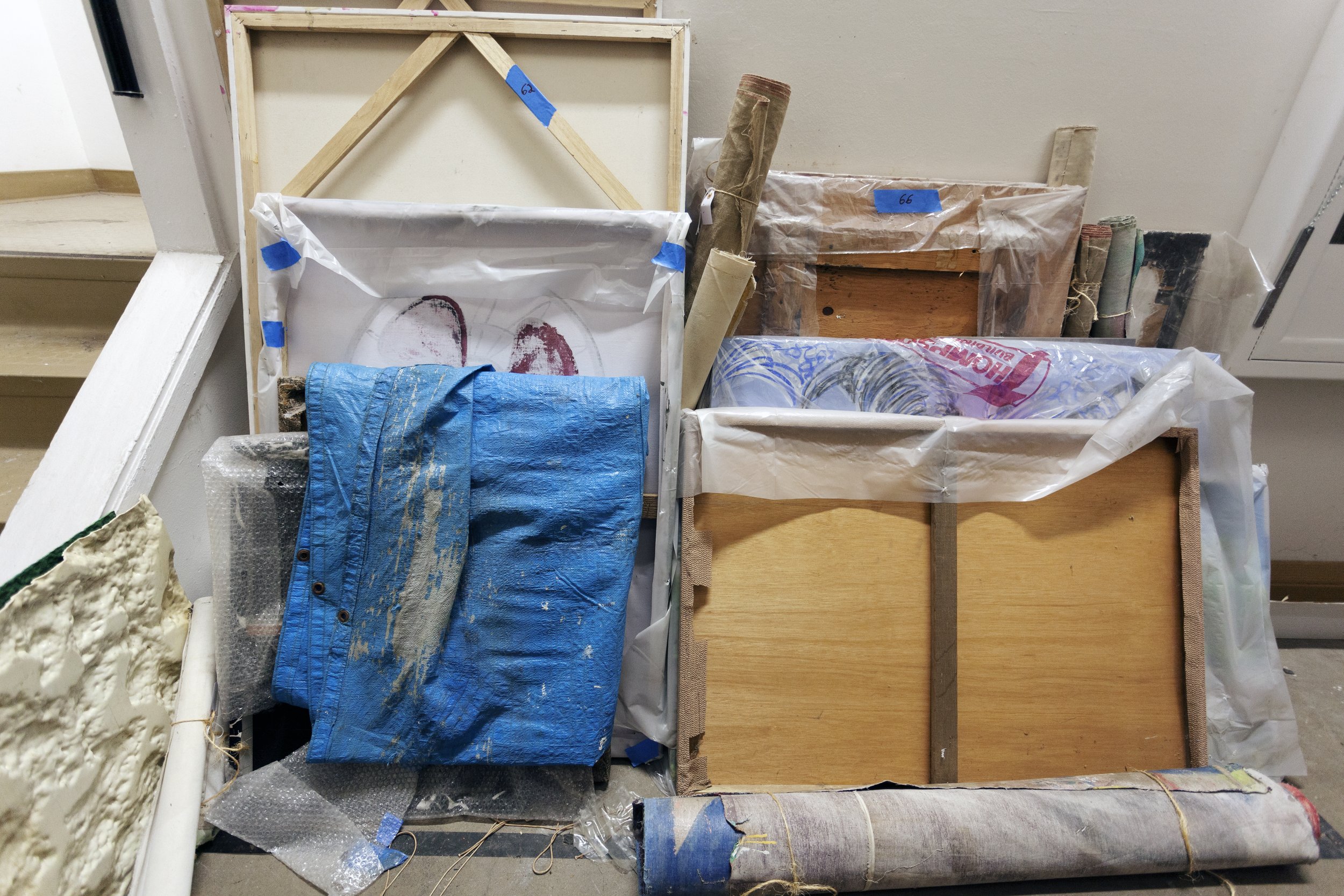
Plaster, ebony, and poplar forms are materials from Turner’s studio inventory which were once components of various sculptures.

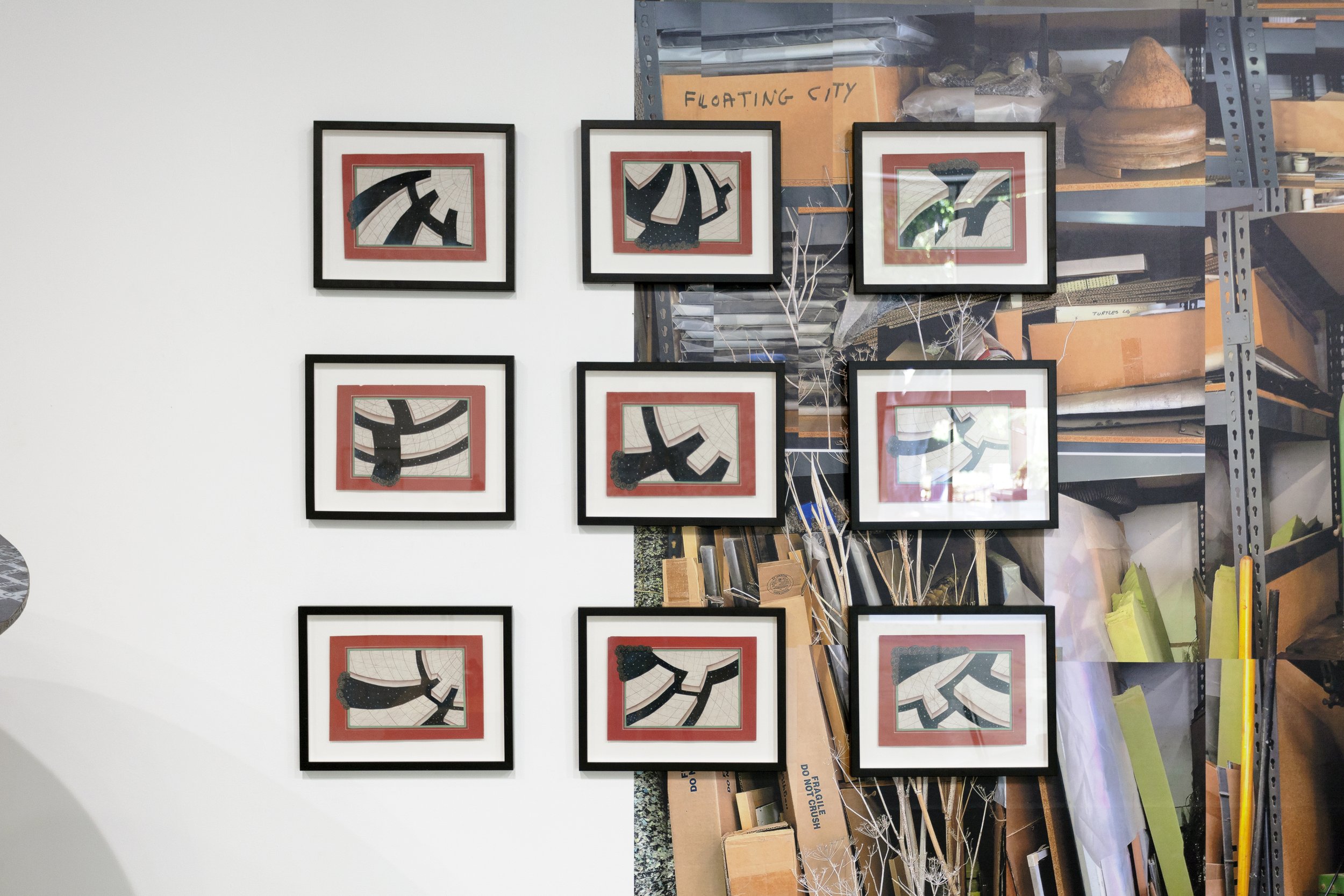

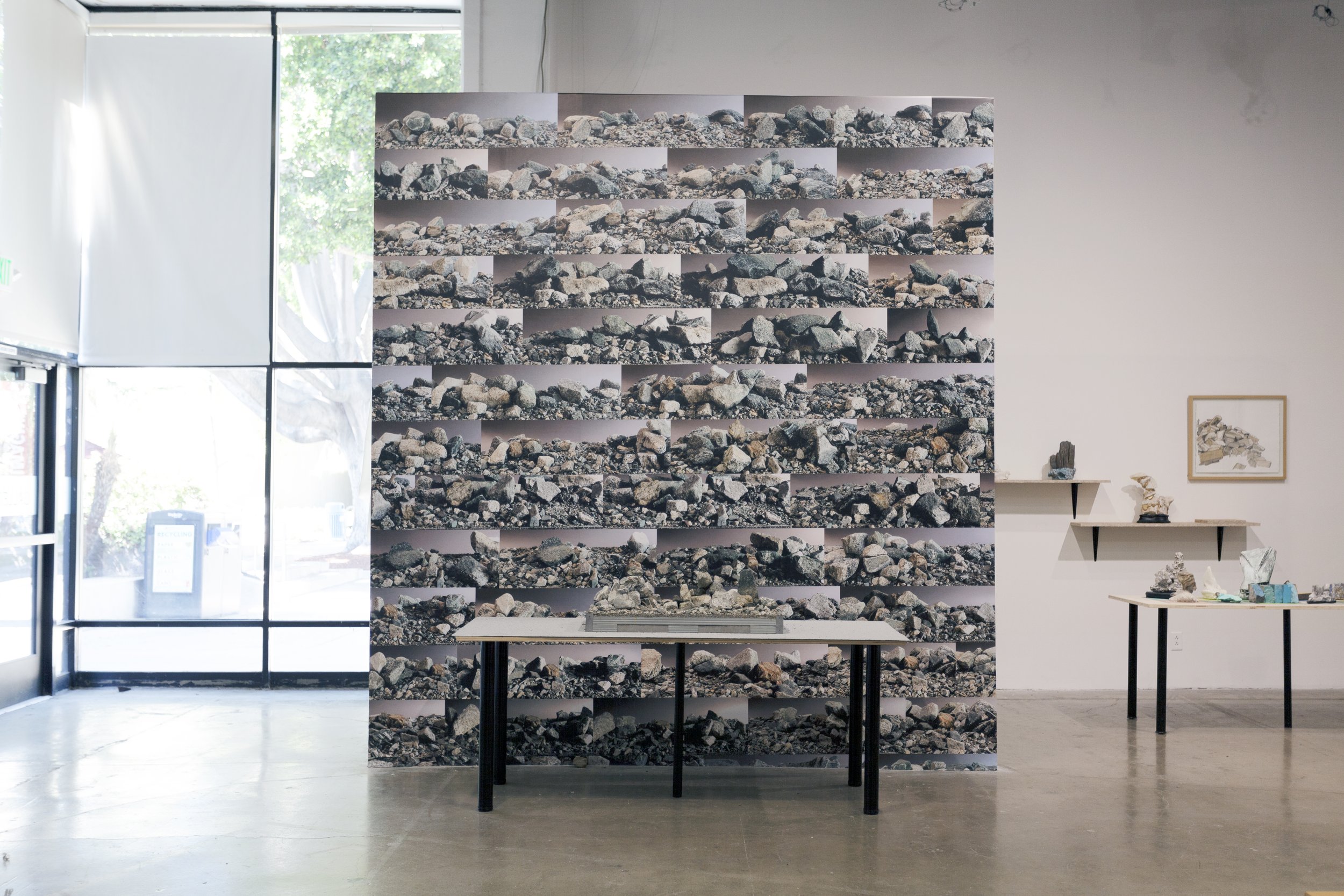



This sculpture was also a part of the Contempt Mandala installation. Three years later, it appeared in Studio / Cities. The piece journeys back to Saigon, 1959, where Turner lived as a teenager.


The sequence of arrangements in a framed image on the wall is a prompt for gallery visitors to imagine the materials arrayed on the table in a repetitive cycle of compositions that begin and end in the same state.


The couch is from Turner’s home office, tables are from Ikea, and the books are nonfiction that he has co-authored, catalogs from past shows and exhibitions he has curated, and artist books. The images in the digital frame are from the three publications which accompany No Ideas But in Things.

Turner purchased the buffalo hide for a piece in his Saigon, CA exhibition. The video was made for his Studio / Cities exhibition, and the chair and rug were been acquired through family members. Turner built the side table, and placed a sculpture of an astronomical instrument from an observatory in Jaipur on top.


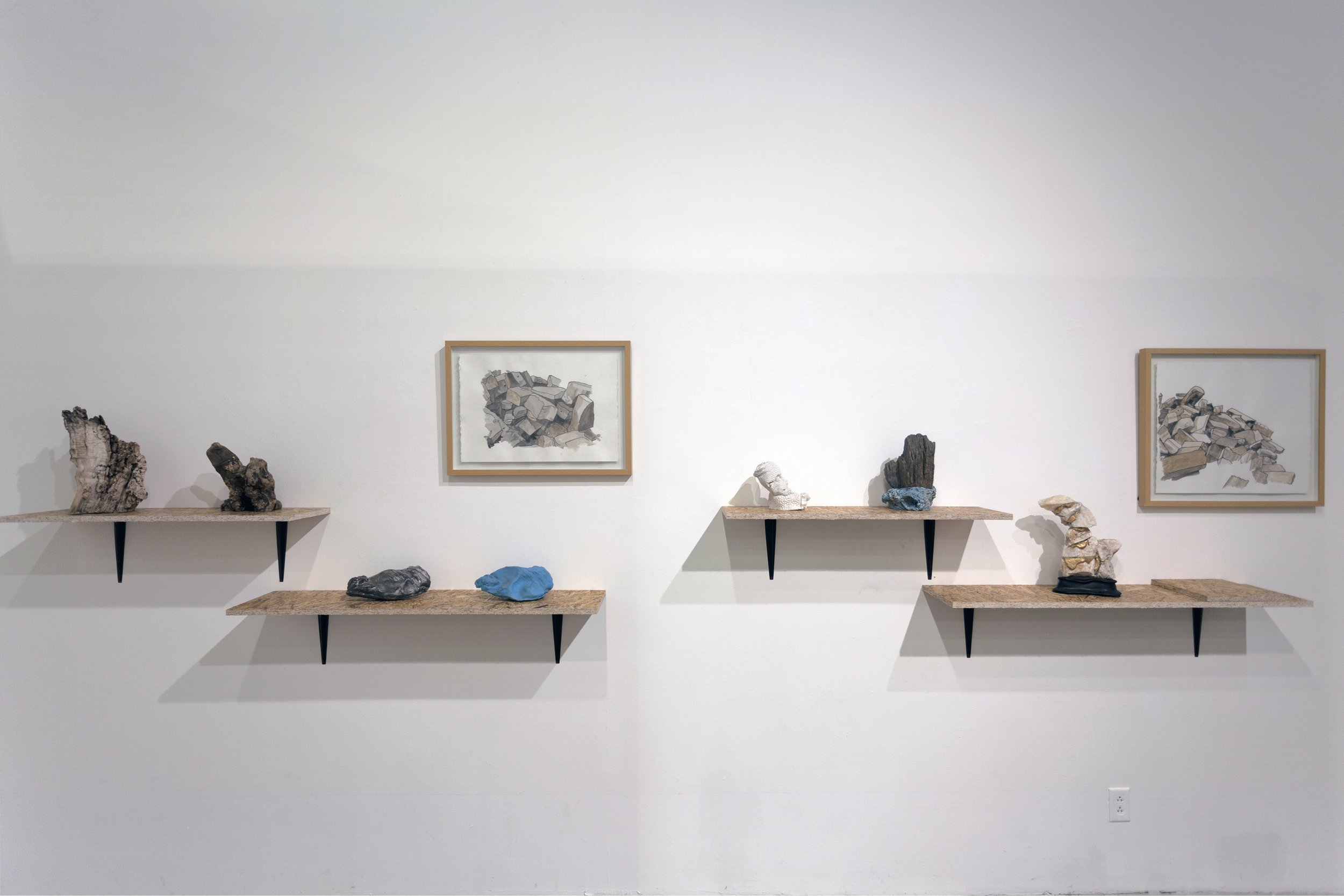



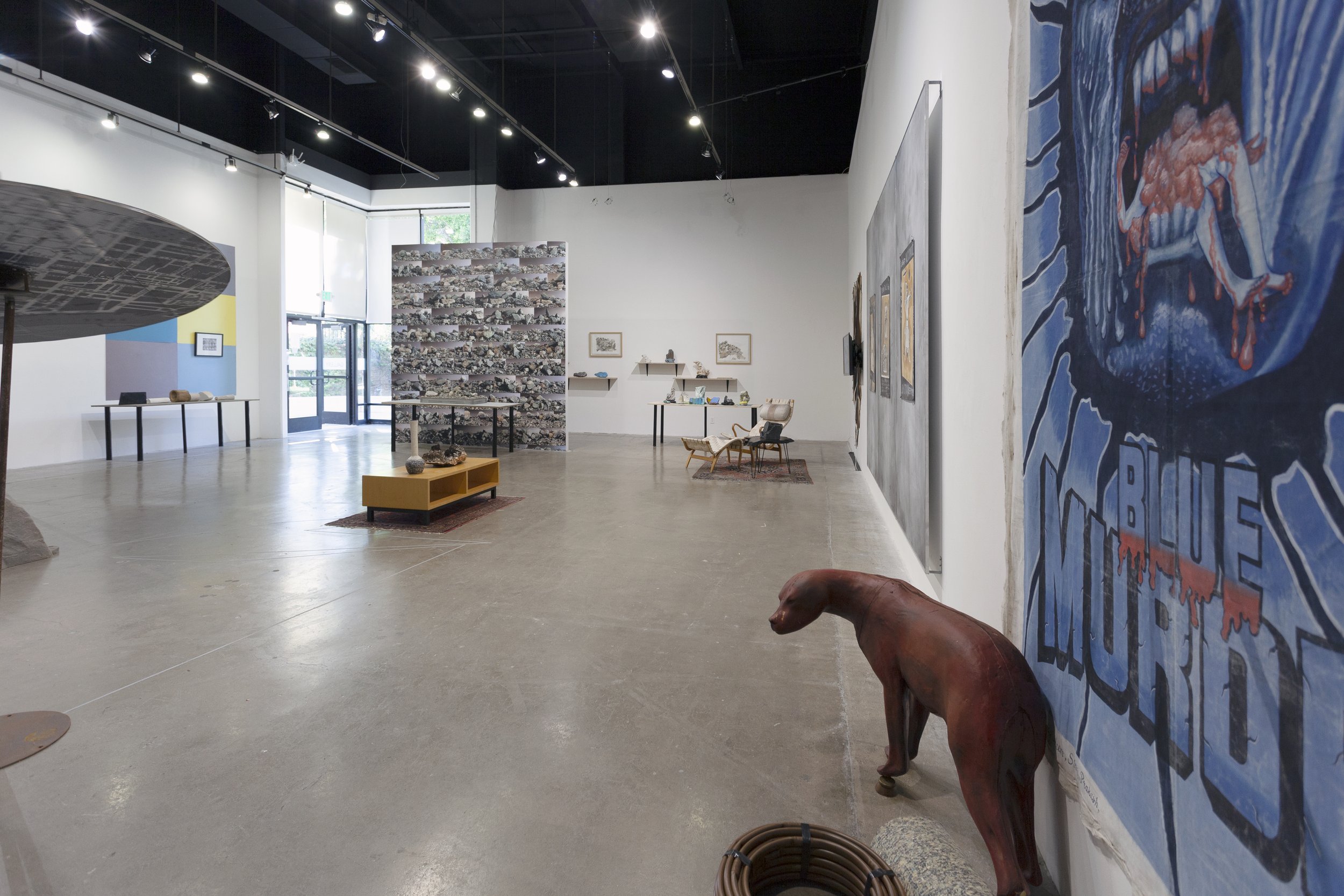


This painting was first done in P.N. Sharma’s Jaipur workshop, synthesizing motifs from Hindi movie posters. It was first shown in Turner’s Dish Walla exhibition.
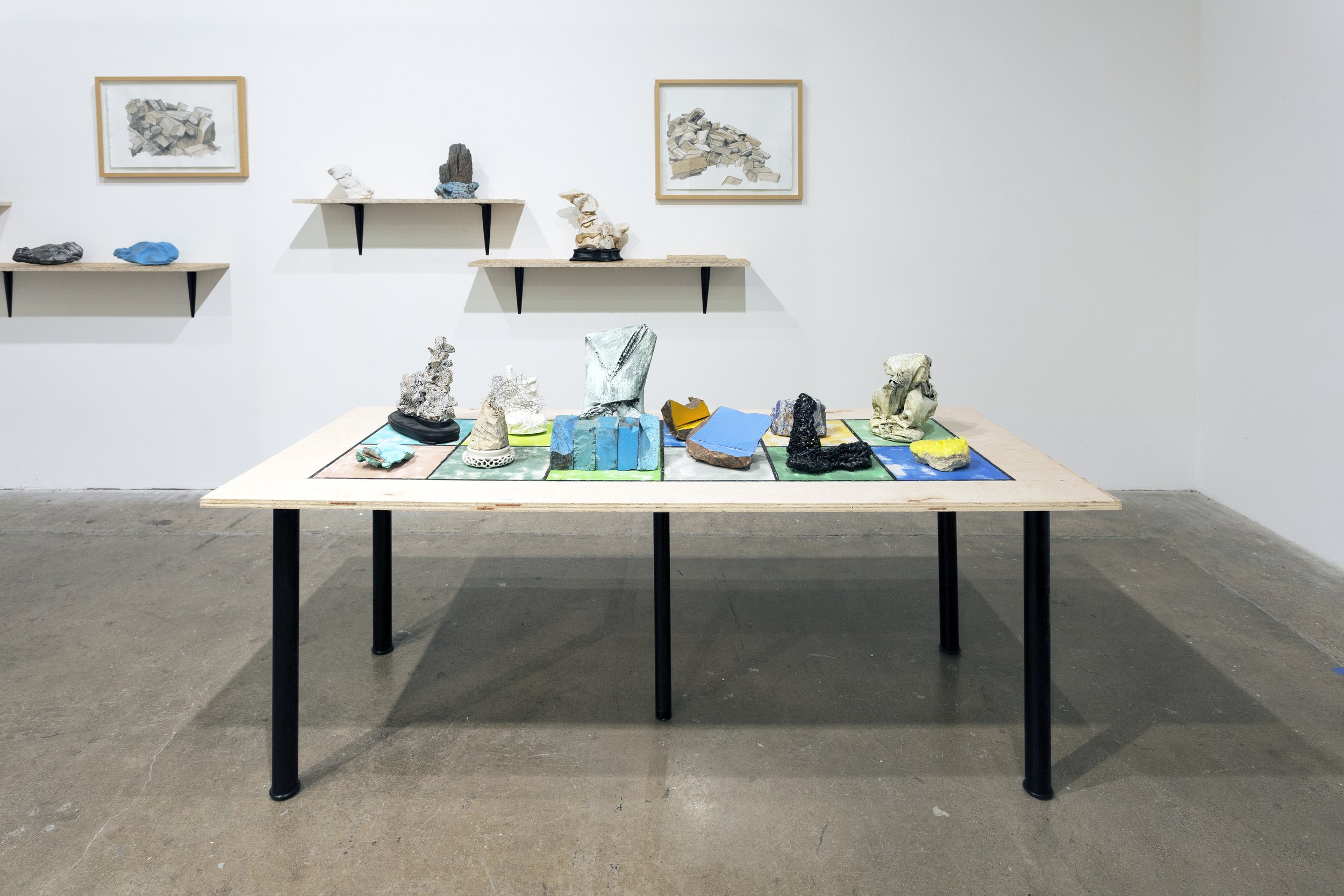
The shelves and tables hold selected examples of Turner’s experimentation with the aesthetics of viewing stone collection and display. They are accompanied with drawings of the ruins of Angkor Wat.






Pictured is a collection of granite rocks and gravel, with a wall of images documenting multiple arrangements of the material. Turner undertook the experiment to determine if there were landscapes that could not be evoked in a single stone, but understood only through multiple.


















































